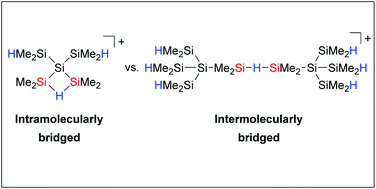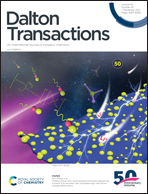The influence of ring strain on the formation of Si–H–Si stabilised oligosilanylsilyl cations†
Abstract
Hydride transfer between Si(SiMe2H)4 (2) and [Ph3C][B(C6F5)4] in 3-fluorotoluene yields the intermolecularly silane-stabilised silylium ion [((HMe2Si)3SiSiMe2)2H]+ ([5]+), independently of the amount of [Ph3C][B(C6F5)4] (0.5, 1.0 or 2.0 equiv.) used. The cyclic silane-stabilised silylium ion [4]+ is not detected by NMR spectroscopy. This result demonstrates the influence of ring strain effects on the formation of intra- ([4]+) or intermolecularly ([5]+) Si–H–Si bridged silyl cations.

- This article is part of the themed collection: Inorganic chemistry of the p-block elements


 Please wait while we load your content...
Please wait while we load your content...